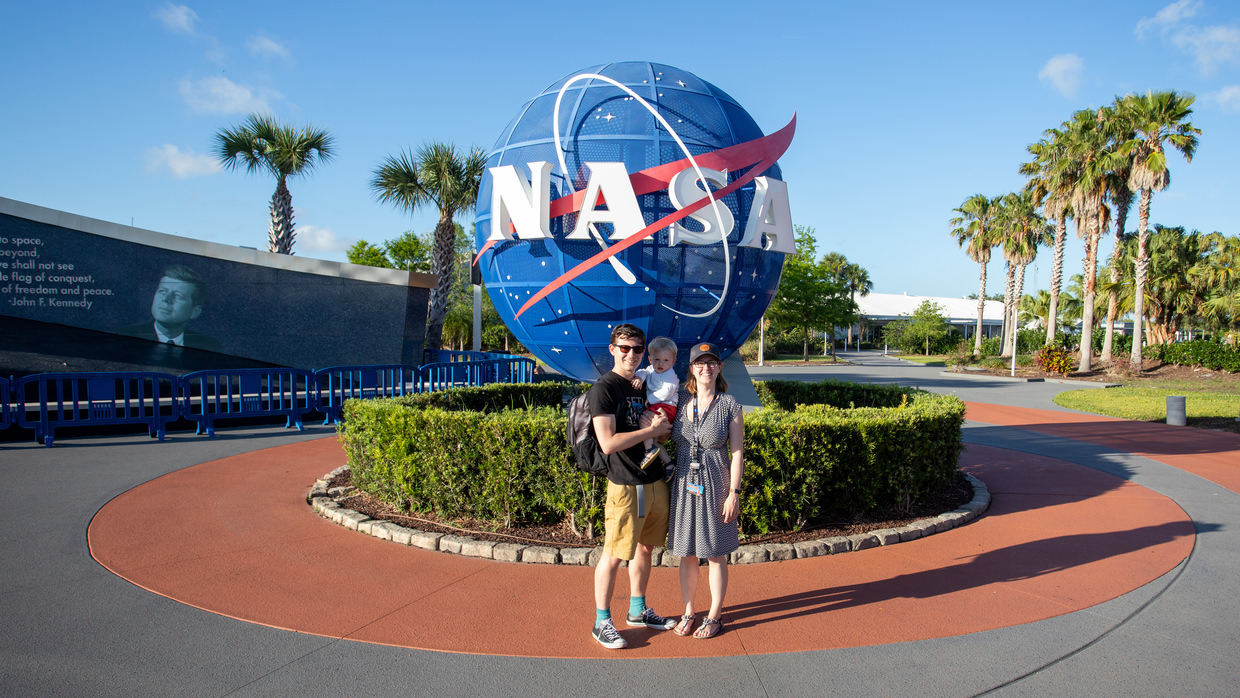Kennedy Space Center (part 1)
Goodbye longboat key, goodbye Bradenton. Onwards we drove, away from Tampa, along the I-4, east, past Orlando and through to the space coast. Cruise control on, feet resting, buttons on the steering wheel for changing speed, we rode in the same lane for hours at a time. Ads for personal injury lawyers flew by, sharing space with hotlines for God.
Kennedy Space Center
We headed straight for the Kennedy Space Center, down the NASA causeway, over the Indian river. Seeing the giant vehicle assembly building on the horizon sent shivers down my spine. There’s so much history here, so much accomplishment, it’s like in all the movies. Scenes from Contact sprung to mind as black pelicans flew over. And just as the anticipation was building – a sign – flashing – it told us the upcoming launch was delayed a day. Just hours ago it was still on. We’d miss the SpaceX launch, the ISS wasn’t ready and NASA had asked for the resupply mission to be postponed. Slightly deflated, but still excited to see all the space things – we continued to KSC, parked, bought our multi-day ticket and rushed into the complex.
It was 2pm, giving us just enough time to take the bus tour and see the Apollo Saturn V center. We ran around to the buses and boarded the first one – a midweek afternoon, it wasn’t busy. Obviously a bus trip is the best idea after a 3 hour car drive, but we didn’t mind.
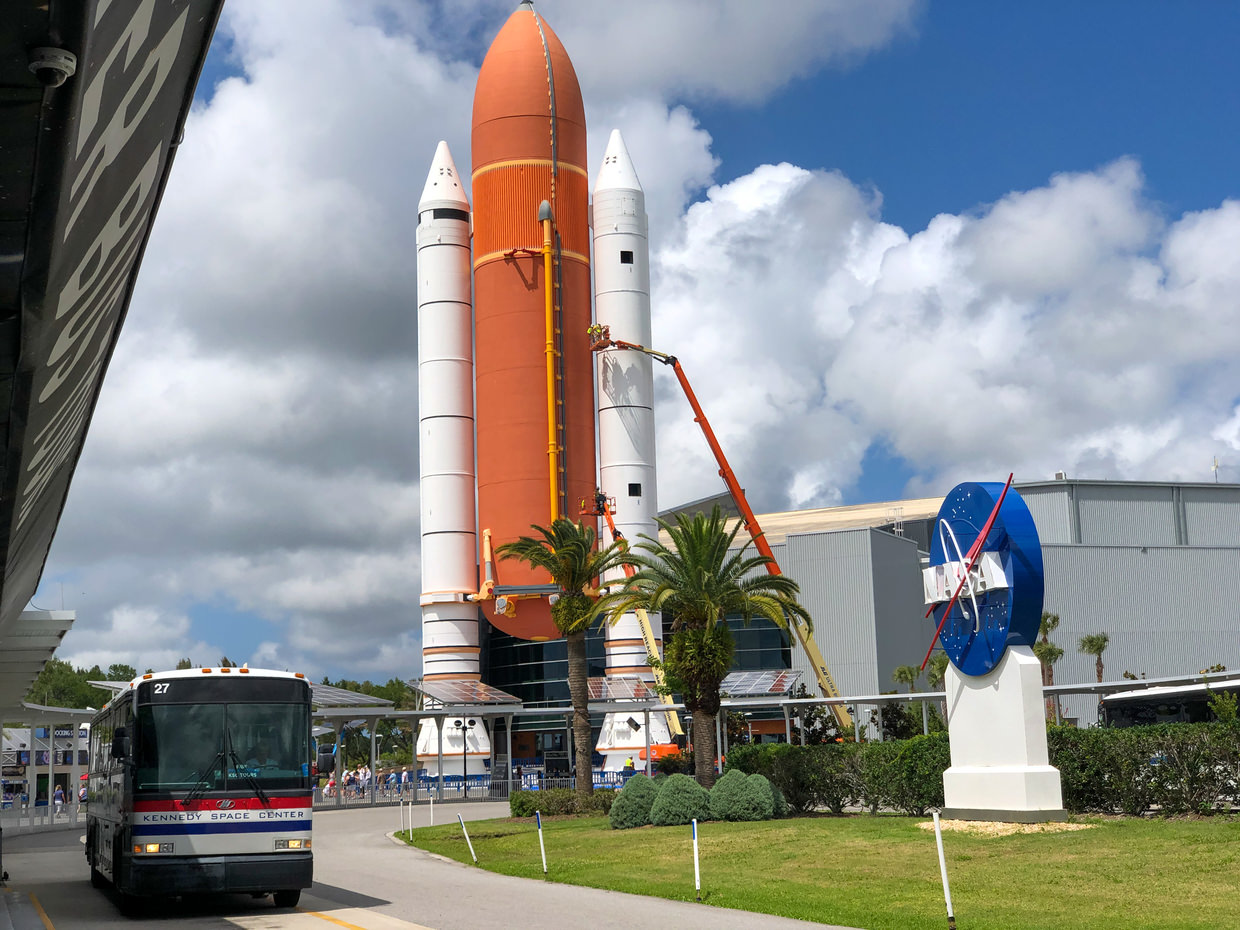
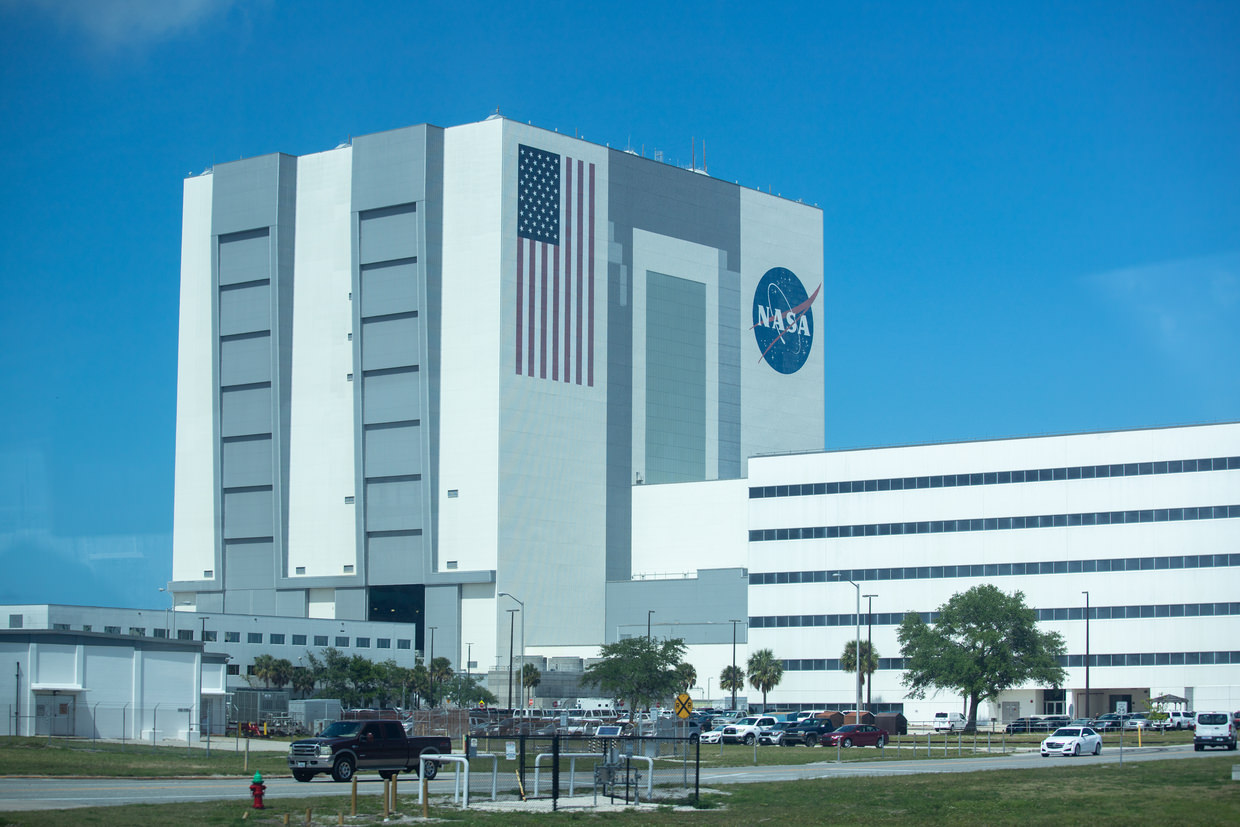
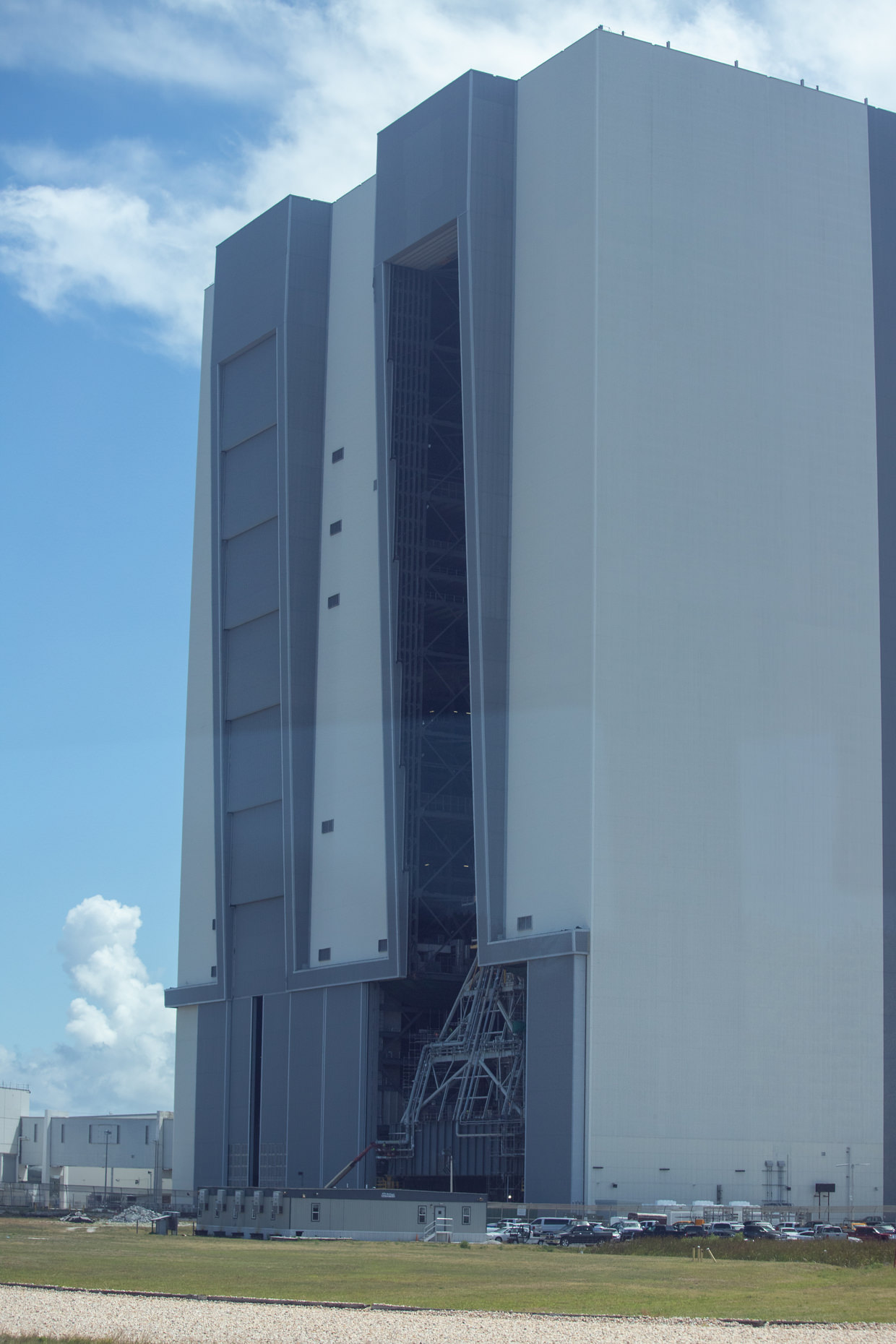
The bus took us out of the visitor center, through the security checkpoint and onto NASA land – first stop, the giant vehicle assembly building (VAB), up close and enormous.
A giant American flag emblazoned the front. Out back, its enormous doors slightly ajar, we could see workmen and the building’s incredible scale. Here too are the mobile launch platform and crawler transporter – previously used for the space shuttle missions, they were now being adapted for NASA’s new Space Launch System (SLS), the most powerful rocket ever built, with the first test missions currently scheduled for June 2020.
From the VAB the tour took us out to the launch pads – our tour operator expected to see the Falcon 9 scheduled for launch – she hadn’t received the update. The pad was sadly empty.
We passed other historical launch pads as we headed out to the most important one – Launch Complex 39 and launch pads 39A and 39B. This is where we left Earth for the moon. It’s where the space shuttle took off. Alligators and tortoises wander the water pools and roads.
Pad 39A has been adapted for SpaceX and their Falcon 9 and Falcon Heavy launches. While pad 39B is being adapted for the SLS missions. Large pylons give protection from lightning strikes, and gone are the iconic vertical supports used for the shuttle and Apollo programs – replaced with horizontal integration systems – rockets arrive lying down and are raised into position on site.
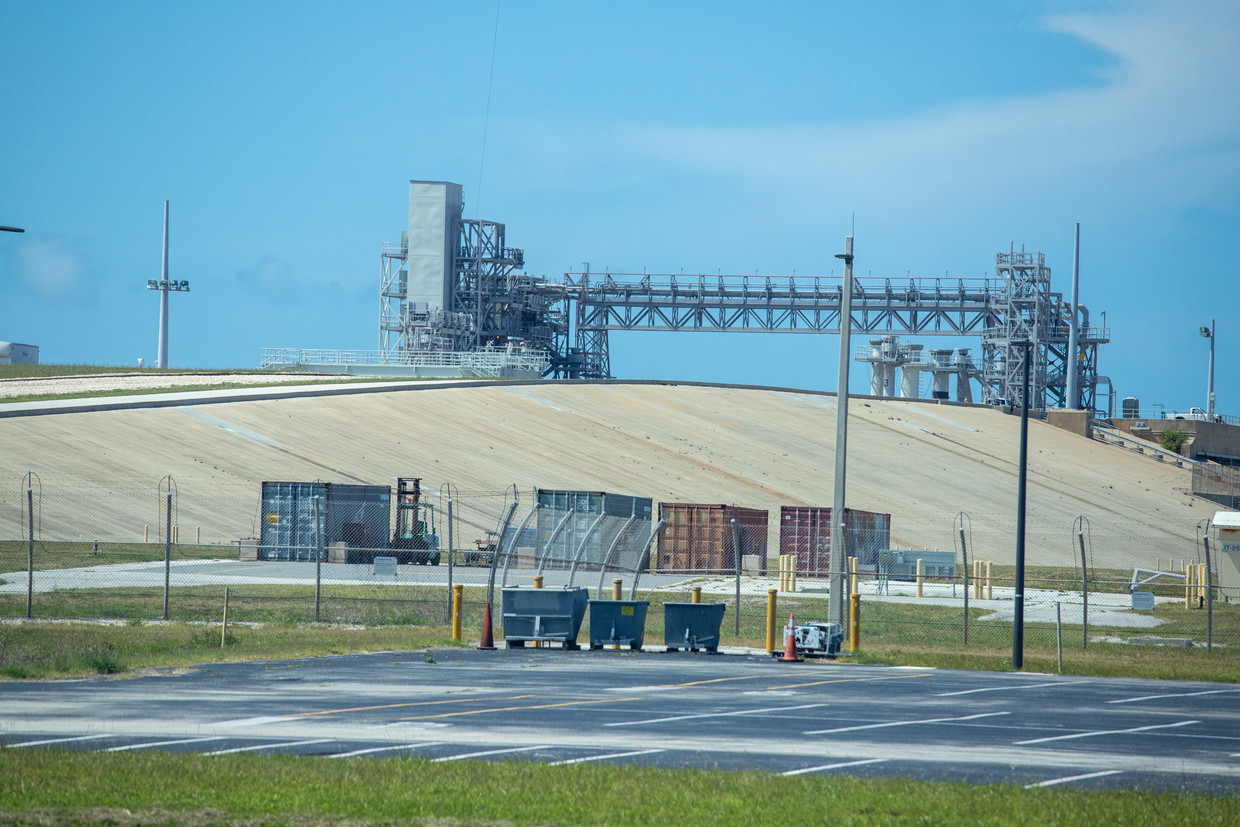
Apollo center
The tour ends at the Apollo center – a museum dedicated to the moon landings and the missions that led to them. From the bus we decamped into a large theatre – where we’re shown Kennedy’s inspiring speech, and the history of the Gemini missions, and the sacrifices made – in particular those during Apollo’s first launch rehearsal, when a fire broke out in the command module killing the crew.
We choose to go to the Moon in this decade and do the other things, not because they are easy, but because they are hard
The theater opens up and we continue, out into a mock-up control room for a simulated launch of Apollo 8. Conway slept in Samantha’s arms throughout the build up and countdown.
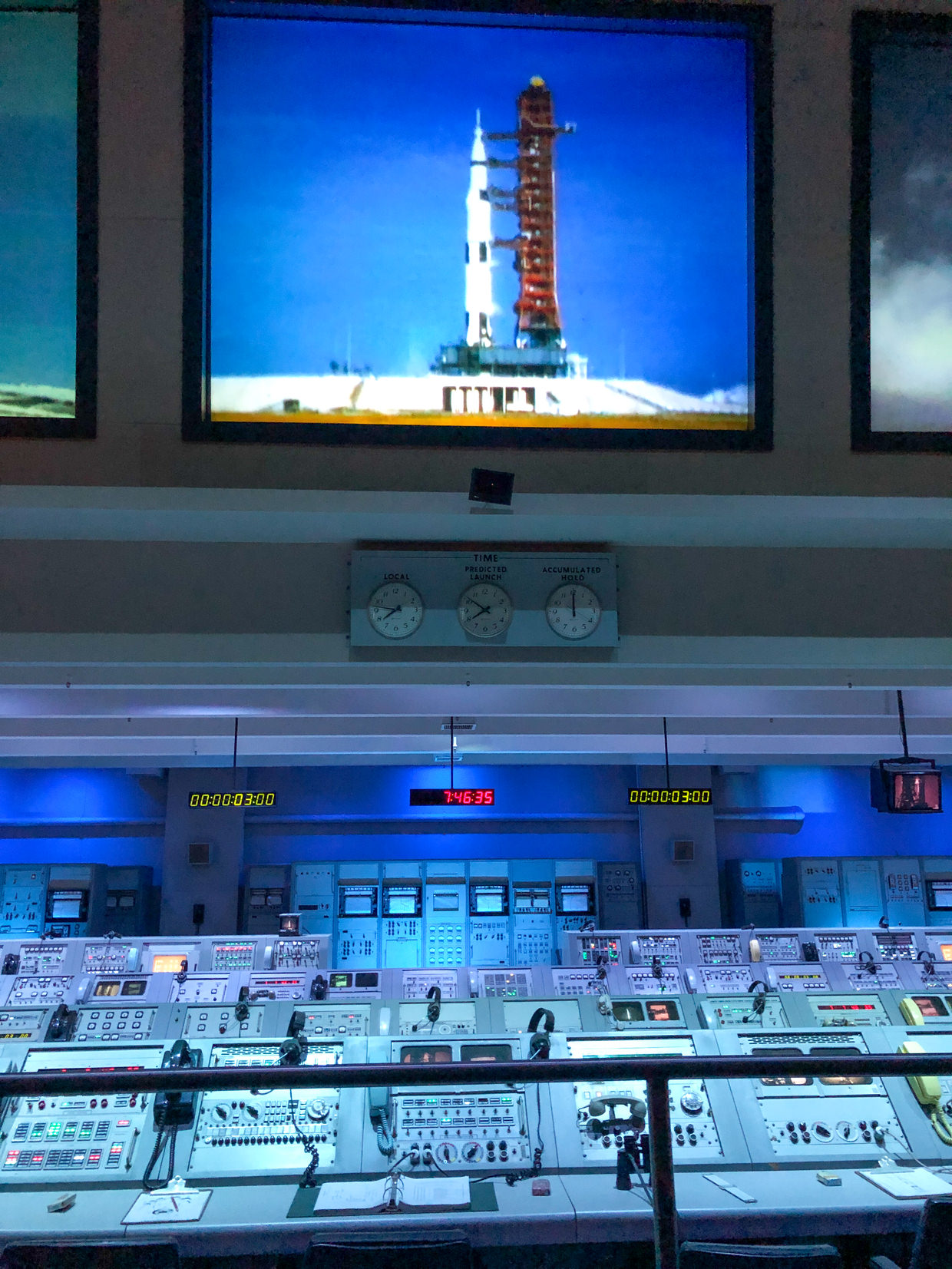
And then we leave the simulation, and find ourselves standing before the awesome thrusters of a giant Saturn V “moon” rocket. The entire rocket lies before us, stretching out as far as we can see. Woah.
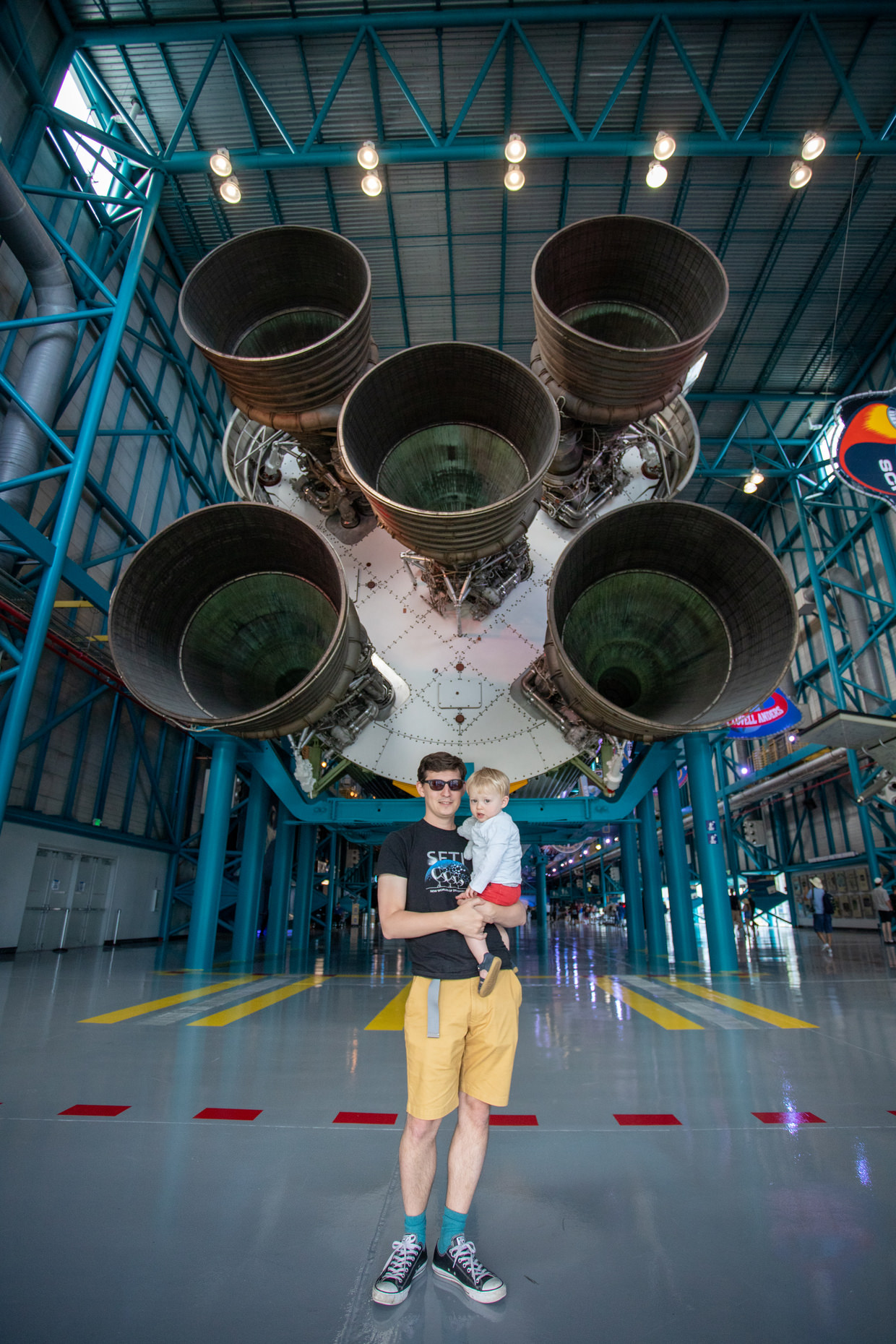
We walked up and down beneath the rocket, truly taking in its scale, then explored the exhibits – touching a bit of moon returned to earth, seeing mockups of a lunar rover, a historic command module, iterations of space suits and space gloves, space tools and video cameras – all the most advanced technologies the 60s had to offer.


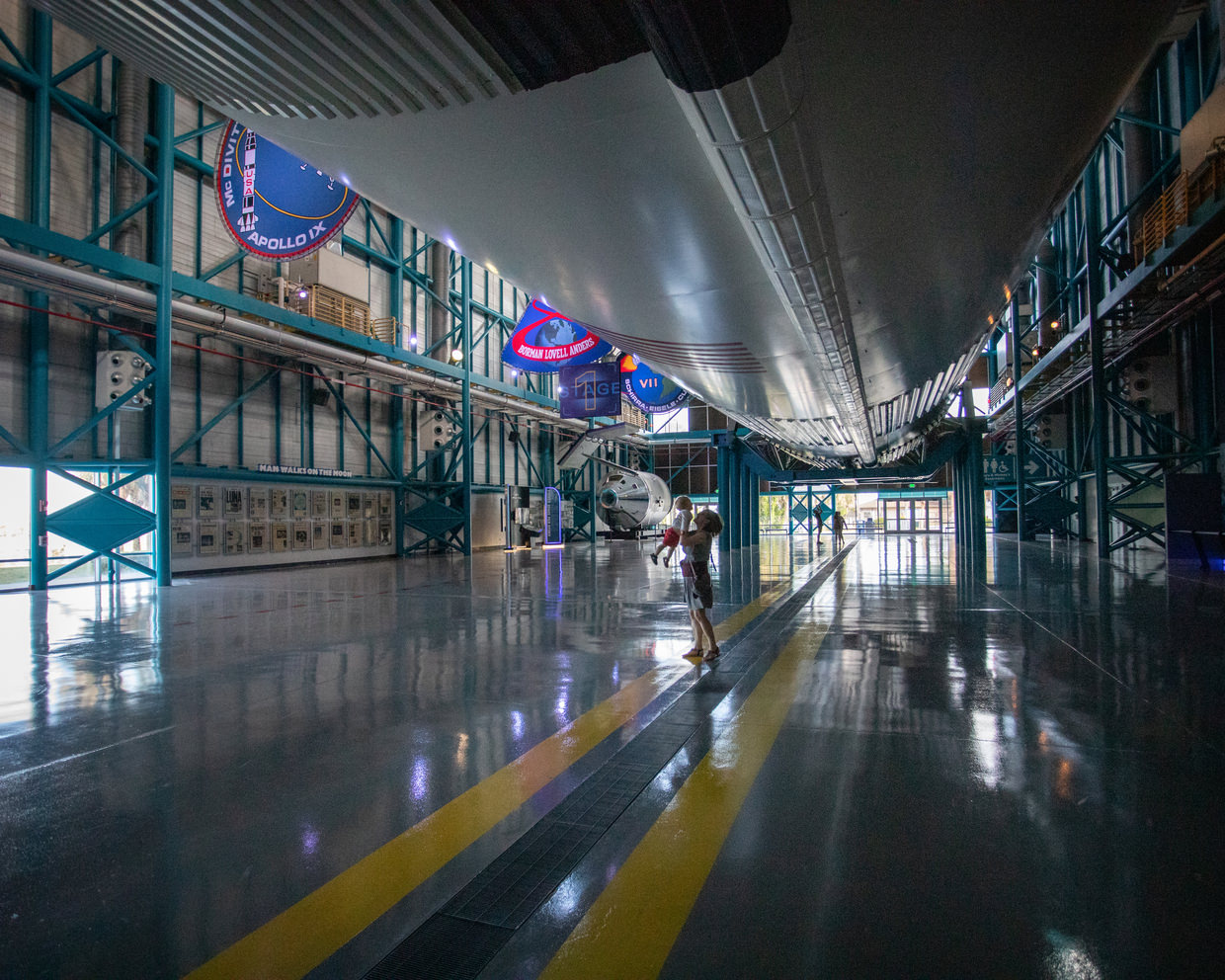
Conway ran around in delight, revelling in the wide open space and shiny floors beneath the rocket. One of us kept an eye on him while the other attempted to read all the descriptions.
We took the bus back to the main visitor complex and bought hot dogs and chips from a kiosk, and ate them while defending the food from unruly birds, one did swoop in and steal a mouthful from baby. We exited via the rocket garden, took photos against the NASA logo, and headed to hotel check-in.
We stayed overnight at Cape Canaveral, where the hotels are basic and overpriced – the Radisson Country Inn and Suites was average in every sense of the word. We were low on food, so I did a 10pm trip to Publix for fruit and bread and snacks while Sam got Conway to sleep. Tomorrow we’d drive north to Georgia.
